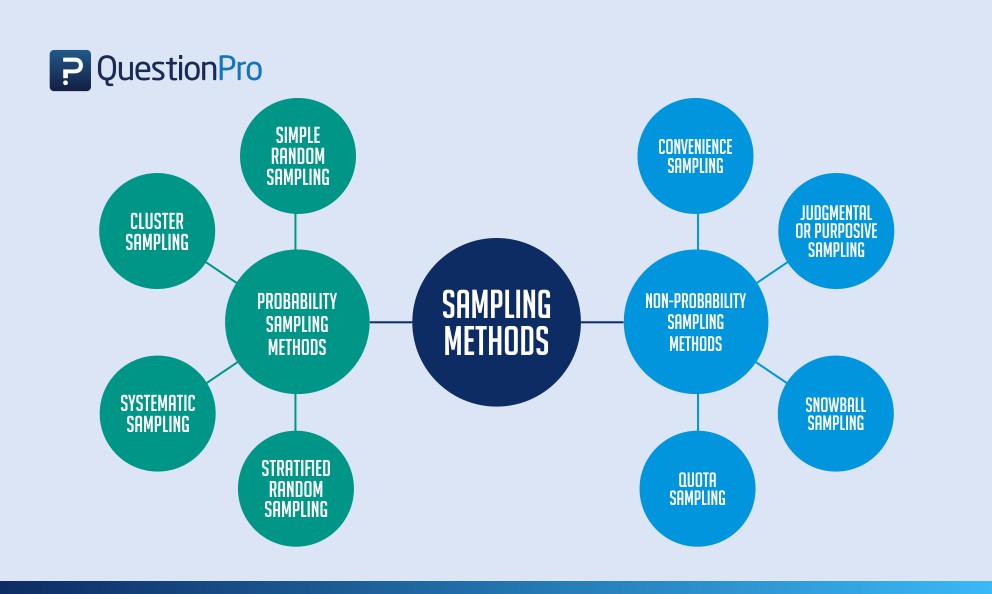Sampling methods are an important part of research. They are used to select a representative sample from a larger population in order to draw conclusions about the population as a whole. Sampling methods can be divided into two main categories: probability sampling and non-probability sampling. Probability sampling involves selecting a sample from a population in such a way that each member of the population has an equal chance of being selected. Non-probability sampling involves selecting a sample from a population in such a way that the selection is not random and the members of the population do not have an equal chance of being selected. Both types of sampling have their advantages and disadvantages, and it is important to understand the differences between them in order to choose the best sampling method for a particular research project.
Exploring the Benefits of Random Sampling in Research
Random sampling is a widely used method of data collection in research. It is a type of probability sampling, which involves selecting a sample of participants from a larger population in such a way that each individual has an equal chance of being selected. Random sampling is a valuable tool for researchers as it can provide a representative sample of the population, allowing for more accurate results and conclusions to be drawn. This article will explore the benefits of random sampling in research.
One of the main advantages of random sampling is that it can provide a representative sample of the population. By randomly selecting participants from the population, researchers can ensure that the sample is representative of the population as a whole. This is important as it allows for more accurate results and conclusions to be drawn from the research. For example, if a researcher was studying the attitudes of people towards a particular issue, they would want to ensure that their sample was representative of the population in terms of age, gender, ethnicity, etc.
Another benefit of random sampling is that it can reduce bias in the sample. By randomly selecting participants, researchers can reduce the chances of bias in the sample. This is important as bias can lead to inaccurate results and conclusions. For example, if a researcher was studying the attitudes of people towards a particular issue, they would want to ensure that their sample was not biased towards one particular group of people.
Finally, random sampling can also reduce the cost of research. By randomly selecting participants, researchers can reduce the cost of data collection as they do not need to contact every individual in the population. This can be especially beneficial for large-scale studies, as it can significantly reduce the cost of data collection.
In conclusion, random sampling is a valuable tool for researchers as it can provide a representative sample of the population, reduce bias in the sample, and reduce the cost of research. It is therefore an important method of data collection that should be considered by researchers when conducting research.
Comparing Probability and Non-Probability Sampling Techniques
Probability and non-probability sampling techniques are two distinct methods of collecting data for research purposes. Probability sampling involves selecting a sample from a population in such a way that each member of the population has an equal chance of being selected. Non-probability sampling, on the other hand, does not involve random selection and does not guarantee that each member of the population has an equal chance of being selected.
The primary difference between probability and non-probability sampling techniques is that probability sampling is based on random selection, while non-probability sampling is based on the researcher’s judgment. Probability sampling is considered to be more reliable and accurate than non-probability sampling because it eliminates bias and ensures that the sample is representative of the population. Non-probability sampling, on the other hand, is less reliable and accurate because it is based on the researcher’s judgment and may be subject to bias.
Another difference between probability and non-probability sampling techniques is that probability sampling is more expensive and time-consuming than non-probability sampling. This is because probability sampling requires the use of complex mathematical formulas to ensure that each member of the population has an equal chance of being selected. Non-probability sampling, on the other hand, is less expensive and time-consuming because it does not require the use of complex mathematical formulas.
In conclusion, probability and non-probability sampling techniques are two distinct methods of collecting data for research purposes. Probability sampling is considered to be more reliable and accurate than non-probability sampling, but it is also more expensive and time-consuming. Non-probability sampling is less reliable and accurate, but it is also less expensive and time-consuming.
Understanding the Impact of Sample Size on Research Results
Sample size is a critical factor in research results, as it can have a significant impact on the validity and reliability of the findings. A sample size that is too small can lead to results that are not representative of the population, while a sample size that is too large can lead to results that are not statistically significant. Therefore, it is important to understand the implications of sample size on research results.
The sample size of a study affects the power of the study, which is the ability to detect a statistically significant difference between two groups. A larger sample size increases the power of the study, as it increases the likelihood of detecting a statistically significant difference. Conversely, a smaller sample size decreases the power of the study, as it decreases the likelihood of detecting a statistically significant difference.
The sample size also affects the precision of the results. A larger sample size increases the precision of the results, as it reduces the margin of error. Conversely, a smaller sample size decreases the precision of the results, as it increases the margin of error.
The sample size also affects the generalizability of the results. A larger sample size increases the generalizability of the results, as it increases the likelihood that the results are representative of the population. Conversely, a smaller sample size decreases the generalizability of the results, as it decreases the likelihood that the results are representative of the population.
In conclusion, sample size is an important factor in research results, as it can have a significant impact on the validity and reliability of the findings. A larger sample size increases the power, precision, and generalizability of the results, while a smaller sample size decreases the power, precision, and generalizability of the results. Therefore, it is important to consider the implications of sample size when designing and interpreting research studies.
Examining the Advantages and Disadvantages of Stratified Sampling
Stratified sampling is a type of probability sampling technique that involves dividing the population into homogeneous subgroups, or strata, and then randomly selecting a sample from each stratum. This method is often used when the population is heterogeneous and the researcher wants to ensure that the sample accurately reflects the population. While stratified sampling has many advantages, it also has some disadvantages that should be considered before using this method.
Advantages
One of the main advantages of stratified sampling is that it increases the precision of the sample by ensuring that the sample accurately reflects the population. This is because the population is divided into homogeneous subgroups, or strata, and then a sample is taken from each stratum. This ensures that the sample is representative of the population as a whole.
Another advantage of stratified sampling is that it is more efficient than other sampling methods. This is because the sample size can be reduced without sacrificing accuracy. This is because the sample size is determined by the size of the strata, rather than the size of the population.
Finally, stratified sampling is relatively easy to implement. This is because the population is already divided into strata, so the researcher does not have to manually divide the population into strata.
Disadvantages
One of the main disadvantages of stratified sampling is that it can be difficult to determine the appropriate strata. This is because the strata must be homogeneous and accurately reflect the population. If the strata are not chosen correctly, the sample may not accurately reflect the population.
Another disadvantage of stratified sampling is that it can be time-consuming and expensive. This is because the researcher must determine the appropriate strata and then collect data from each stratum.
Finally, stratified sampling can be biased if the strata are not chosen correctly. This is because the sample may not accurately reflect the population if the strata are not chosen correctly.
In conclusion, stratified sampling has many advantages, such as increased precision and efficiency, as well as being relatively easy to implement. However, it also has some disadvantages, such as difficulty determining the appropriate strata, time-consuming and expensive data collection, and potential bias. Therefore, it is important to consider these advantages and disadvantages before using stratified sampling.
Investigating the Use of Systematic Sampling in Research Studies
Systematic sampling is a type of probability sampling technique that is used in research studies to select a sample from a population. This technique is based on the principle of random selection, which ensures that each member of the population has an equal chance of being selected for the sample. Systematic sampling is often used when the population is too large to be sampled in its entirety.
The use of systematic sampling in research studies has been widely investigated in the literature. Studies have found that systematic sampling can be an effective method for selecting a representative sample from a population. This is because it ensures that the sample is randomly selected, which reduces the risk of bias in the results. Additionally, systematic sampling is relatively easy to implement and can be used to select a sample quickly and efficiently.
However, there are some drawbacks to using systematic sampling in research studies. For example, it is not suitable for populations that are not evenly distributed, as this can lead to an unrepresentative sample. Additionally, systematic sampling can be difficult to implement in certain situations, such as when the population is not known in advance.
Overall, systematic sampling can be a useful tool for selecting a representative sample from a population. However, it is important to consider the potential drawbacks of this technique before using it in a research study. Additionally, researchers should ensure that they are familiar with the principles of random selection and understand how to implement systematic sampling correctly.
Conclusion
Sampling methods are an important part of research, as they allow researchers to collect data from a representative sample of the population. Different sampling methods have different advantages and disadvantages, and the choice of which method to use depends on the research question and the resources available. Ultimately, the goal of sampling is to ensure that the sample is representative of the population, so that the results of the research can be generalized to the population as a whole.
Discussion
[wpaicg_chatgpt]



